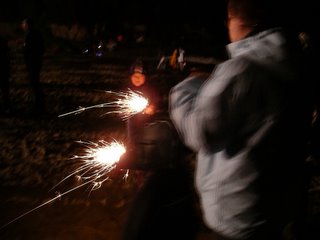Guy Fawkes




After Queen Elizabeth I died in 1603, English Catholics who had been persecuted under her rule had hoped that her successor, James I, would be more tolerant of their religion. James I had, after all, had a Catholic mother. Unfortunately, James did not turn out to be more tolerant than Elizabeth and a number of young men, 13 to be exact, decided that violent action was the answer.
Guy Fawkes and 12 other men conspired to blow up the Houses of Parliament on November 5th, 1605.
Guy Fawkes wasn't the leader but was the one who was caught under the House of Lords with 36 barrels of gunpowder.
But Guy wasn't in prison alone for long. Soon, many conspirators were either caught outright as they flew from London, or surrendered shortly thereafter. Some, however, including the ringleader Robert Catesby, were killed in a siege within a few days of the failed attempt.
All the conspirators who were not killed in the siege were imprisoned, tortured, and executed in the most gruesome way (except Francis Tresham who fell sick and died while in prison).
All imprisonned plotters were executed publicly in March 1607. They were "hanged, drawn, and quartered", a brutal practice which authorities hoped would instill terror in other potential traitors.
Did public executions really function as a deterrent? Or did they simply feed the climate of violence that encouraged Catesby and his men to pursue their deadly aims?

2 Comments:
Nos blogs temos oportunidade de ler, para além dos post, os comments dos outros. Faz parte e é algo que me apetece fazer. Uma espécie de curiosidade (saudável). Mas depois há estas coisas esquisitóides como comentários de anónimos automáticos que irritam um santo!
Estou aqui, só para saberes.
BEijos
a.m.
Pois é!
Normalmente apago esses "parasitas", mas este falhou.
;)
É bom saber que estás por aqui :D
Beijos
jd
Post a Comment
<< Home